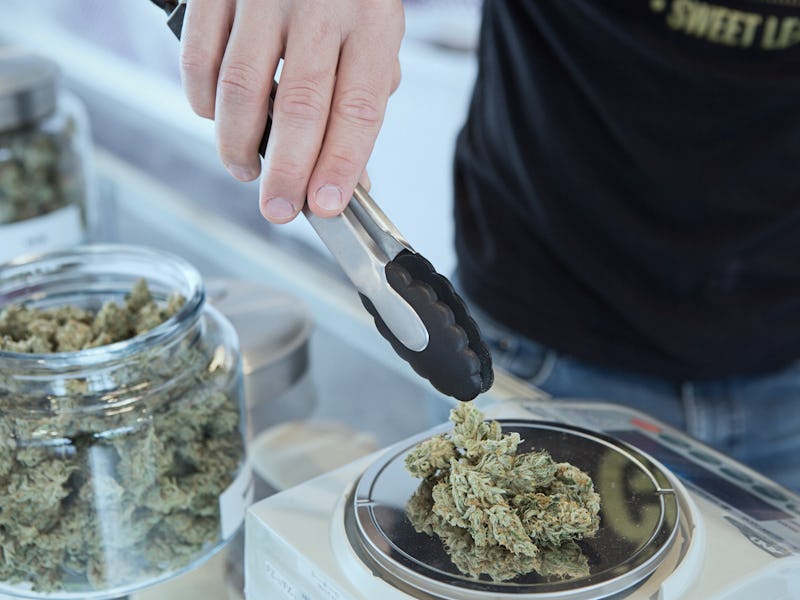Public Sewage Revealed Shift Away From Illegal Weed After Legalization
"Many established users switched from the illegal to the legal market."

When the citizens of Washington voted to legalize cannabis in 2012, the potential effects this change would have on the state were a mystery. With a thriving black market on the West Coast of the US, it wasn’t at all clear whether Washingtonians would embrace state-licensed cannabis dispensaries. New research in the journal Addiction, though, suggests that the legal cannabis market in Washington has put a significant dent in the illegal market. And the evidence is all in the sewers.
In a paper published on Tuesday, a team of researchers analyzed three years of sewage samples and cannabis sales data to determine how much cannabis the people in one region of Washington were using, and just as importantly, how they were getting it. They observed that even as people seemed to be using more cannabis, people in the same area were also buying more cannabis from legal retailers.
During the time period from the summer of 2014, when the first legal stores in the region opened, through the winter of 2016, sewage samples showed that THC consumption increased by about 9 percent per quarter. The researchers figured this out by measuring concentrations of 11-nor-9-Carboxy-Δ9-tetrahydrocannabinol — THC-COOH, a metabolite of THC — from two wastewater treatment plants. Over the same period, records of legal cannabis sales showed that they increased by a whopping 60 to 70 percent each quarter.
Since people were buying a lot more legal weed but only smoking a little more weed overall, the team concluded that this meant consumers were migrating to the legal marketplace.
The legal cannabis market in one region of Washington seems to have put a significant dent in the illegal cannabis market in the first few years of legalization.
“Given that wastewater represents a total population measure, these findings suggest that many established users switched from the illegal to the legal market,” write the study’s authors, a team from the University of Puget Sound and the University of Washington.
“This is the strongest statement possible regarding displacement of the illegal market, given limitations regarding knowledge of the excretion rates of different forms of cannabis, which limit matching sales to wastewater system users, and the wastewater stability of THC-COOH.”
As more and more public health researchers use sewage to track drug use trends, It’s important to note what sewage data can tell us — and what it can’t.
In this case, sewage concentrations of THC-COOH in wastewater can give a pretty good idea of how much THC a given population is using as a whole. In this study, scientists measured THC-COOH concentrations in wastewater from the 50,000 people served by one wastewater plant and the 150,000 people served by the other. The wastewater analysis can’t tell us whether this means more people are smoking than before or the same number of people started smoking more. Since the samples were taken at central locations, all we know his how much the whole community is using.
One of the major advantages of sewage testing is that it’s extremely easy for scientists to acquire samples that tell them a lot about a community. But as critics have pointed out, testing sewage for drugs can easily become a worrisome form of mass surveillance — one that gets around privacy concerns since no individual’s data is collected. With sewage data, law enforcement officials could measure the impact of drug busts and crack down against nonviolent drug users, or even worse, scientific researchers could inadvertently expose research subjects to law enforcement scrutiny.
That’s why in this case, as in many others, the researchers remained fairly vague about exactly where they got their samples from, even though cannabis is legal in Washington. Since the state legalized the substance, it has remained divisive among residents, so it’s possible that naming the communities involved could contribute to those tensions.
For now, though, the data suggest that legalization is doing a good job of cutting out the illegal market.
Abstract:
Aims: To perform a wastewater-based analysis to explore the impact of newly legalized retail cannabis sales on its use and to determine if this approach could estimate the size of the legal market place, which began 1 August 2014 in the study area.
Design: Laboratory study of raw wastewater samples collected and analyzed over the 3-year period from 2014 to 2016. Setting and Participants Samples obtained from the two wastewater treatment plants that serviced a municipality of 200,000 people in the state of Washington, USA.
Measurements: Quantitative analysis of 24-hour composite in- fluent samples for the metabolite of the active ingredient in cannabis, 11-nor-9-Carboxy-Δ9-tetrahydrocannabinol (THC- COOH) were performed by liquid chromatography coupled to mass spectrometry.
Findings: Wastewater estimates for THC-COOH increased by 9% per quarter, suggesting a doubling in cannabis consumption from 1 December 2013 to 31 December 2016. State-sold THC increased at nearly 70% per quarter, while stores operated from 1 August 2014 to 31 December 2016. Estimating the proportion of the total cannabis market supplied by state-regulated cannabis from these data is not currently achievable.
Conclusion: A wastewater-based measure of cannabis consumption suggests a significant increase in consumption in Washington, USA following legalization, and that legal sales appear to have displaced a large portion of the illicit market.